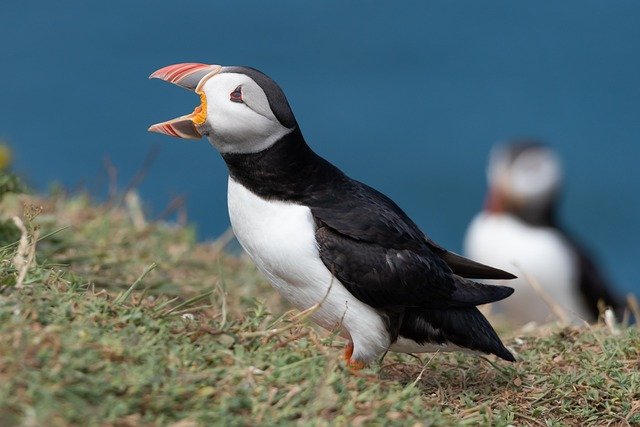The Surprising World of Puffin Colonies
Nestled along rugged coastlines and remote islands, puffin colonies offer a captivating glimpse into one of nature's most charismatic seabirds. These vibrant, tuxedo-clad creatures have long fascinated scientists and nature enthusiasts alike, but recent research has uncovered surprising insights into their complex social structures and remarkable adaptations. From their impressive diving abilities to their intricate courtship rituals, puffins continue to astonish researchers and delight observers with their unique behaviors and resilience in the face of environmental challenges.

Social Structures Unveiled
Recent studies have shed light on the intricate social dynamics within puffin colonies. Contrary to earlier beliefs, puffins exhibit complex social behaviors that extend beyond simple pair bonding. Researchers have observed that puffins form tight-knit communities, with individuals recognizing and interacting with numerous colony members. These social networks play a crucial role in information sharing, particularly regarding food sources and potential threats. Additionally, puffins have been found to engage in cooperative behaviors, such as group fishing expeditions and collective vigilance against predators.
Remarkable Diving Prowess
One of the most impressive aspects of puffin biology is their exceptional diving ability. These relatively small birds can plunge to depths of up to 60 meters (200 feet) in search of food. Their streamlined bodies and powerful wings allow them to swim underwater with remarkable agility, using their webbed feet for steering. Puffins have also developed unique adaptations to withstand the pressure changes associated with deep diving. Their bodies can compress air sacs and flatten their wings, reducing buoyancy and allowing for more efficient underwater movement. This remarkable diving prowess enables puffins to access a wide range of prey, including small fish, squid, and marine invertebrates.
Intricate Courtship Rituals
Puffin courtship rituals are among the most elaborate and entertaining in the avian world. These rituals typically begin in early spring when puffins return to their breeding colonies. The process involves a series of highly choreographed behaviors, including synchronized head bobbing, bill clacking, and mutual preening. One of the most fascinating aspects of puffin courtship is the bill knocking or billing display. During this ritual, mated pairs rapidly tap their colorful beaks together, creating a distinctive sound that echoes across the colony. This behavior not only strengthens pair bonds but also serves as a visual and auditory spectacle that reinforces social connections within the larger colony.
Adapting to Environmental Challenges
As climate change and human activities continue to impact marine ecosystems, puffins face numerous challenges. Rising sea temperatures have led to shifts in prey distribution, forcing puffins to adapt their foraging strategies. In some regions, puffins have been observed traveling greater distances to find suitable food sources, potentially impacting their breeding success. Additionally, changes in ocean currents and weather patterns have affected the timing of plankton blooms, which can disrupt the entire marine food web upon which puffins depend. Despite these challenges, puffins have shown remarkable resilience and adaptability. Some colonies have adjusted their breeding schedules to better align with prey availability, while others have diversified their diets to include a wider range of marine species.
Conservation Efforts and Future Prospects
The unique characteristics and ecological importance of puffin colonies have spurred increased conservation efforts worldwide. Numerous organizations and research institutions are working to protect and restore puffin habitats, monitor population trends, and mitigate the impacts of climate change. These efforts include establishing protected marine areas, implementing sustainable fishing practices, and conducting long-term studies to better understand puffin ecology and behavior. The estimated cost of these conservation initiatives varies widely, with some large-scale projects requiring millions of dollars in funding. However, the potential impact on puffin populations and broader marine ecosystems is considered invaluable by conservationists and researchers alike.





